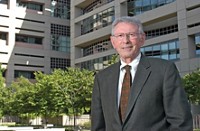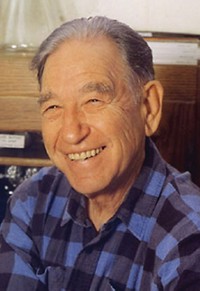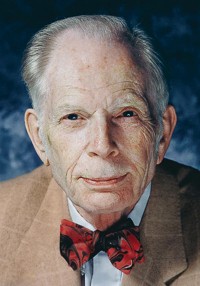Advertisement
Grab your lab coat. Let's get started
Welcome!
Welcome!
Create an account below to get 6 C&EN articles per month, receive newsletters and more - all free.
It seems this is your first time logging in online. Please enter the following information to continue.
As an ACS member you automatically get access to this site. All we need is few more details to create your reading experience.
Not you? Sign in with a different account.
Not you? Sign in with a different account.
ERROR 1
ERROR 1
ERROR 2
ERROR 2
ERROR 2
ERROR 2
ERROR 2
Password and Confirm password must match.
If you have an ACS member number, please enter it here so we can link this account to your membership. (optional)
ERROR 2
ACS values your privacy. By submitting your information, you are gaining access to C&EN and subscribing to our weekly newsletter. We use the information you provide to make your reading experience better, and we will never sell your data to third party members.
People
Emil L. Smith
by Susan J. Ainsworth
July 27, 2009
| A version of this story appeared in
Volume 87, Issue 30
Emil L. Smith, 97, a protein chemistry pioneer and professor emeritus of biological chemistry at the University of California, Los Angeles, died on May 31, after suffering a heart attack two months earlier.
The son of Russian Jewish immigrants, Smith was born in New York City. At age 16, he entered Columbia University, earning a bachelor's degree in biology in 1931 and a doctoral degree in biophysics in 1936 under Selig Hecht. Smith then went to Cambridge University on a Guggenheim Fellowship to work with David Keilin.
During World War II, Smith worked at E. R. Squibb & Sons, in New Brunswick, N.J., focusing on the production of purified proteins from blood plasma for use by the military.
Smith joined the University of Utah in 1946 as associate professor of biochemistry and associate research professor of medicine, becoming full professor in 1950. While at Utah, he also coauthored the textbook "Principles of Biochemistry."
He moved to UCLA in 1963 to become chair of the department of biological chemistry. Smith founded the UCLA Molecular Biology Institute with Paul D. Boyer in 1965. He retired from the university in 1979.
Smith was a pioneer in protein sequencing. Before the availability of DNA technology, protein sequencing required painstaking chemical decoding of the order of amino acids. In 1958, while at the University of Utah, he collaborated with Emanuel Margoliash, conducting some of the earliest research in the study of molecular evolution. Then, working with James Bonner at California Institute of Technology and Robert DeLange at UCLA in the late 1960s, Smith showed that the protein histone H4 is almost identical in plants and mammals. The study highlighted the importance of virtually every amino acid of H4 throughout evolution.
Smith also led the first U.S. scientific delegation to China in 1973. He was elected as a member of the National Academy of Sciences in 1962, the American Academy of Arts & Sciences in 1965, and the American Philosophical Society in 1973. He was an emeritus member of ACS, joining in 1946.
He received the Stein-Moore Award from the Protein Society in 1987. In 1999, he received an Extraordinary Merit Award from the UCLA Alumni Association. He also received the Utah Award from ACS's Central Utah and Salt Lake Sections in 1964.
Smith is survived by his sons, J. Donald and Jeffrey, and two grandchildren, Elia and Keilin. He was preceded in death by his wife of 73 years, Esther.
Susan J. Ainsworth writes obituaries. Obituary notices may be sent to s_ainsworth@acs.org and should include a detailed educational and professional history.





Join the conversation
Contact the reporter
Submit a Letter to the Editor for publication
Engage with us on Twitter